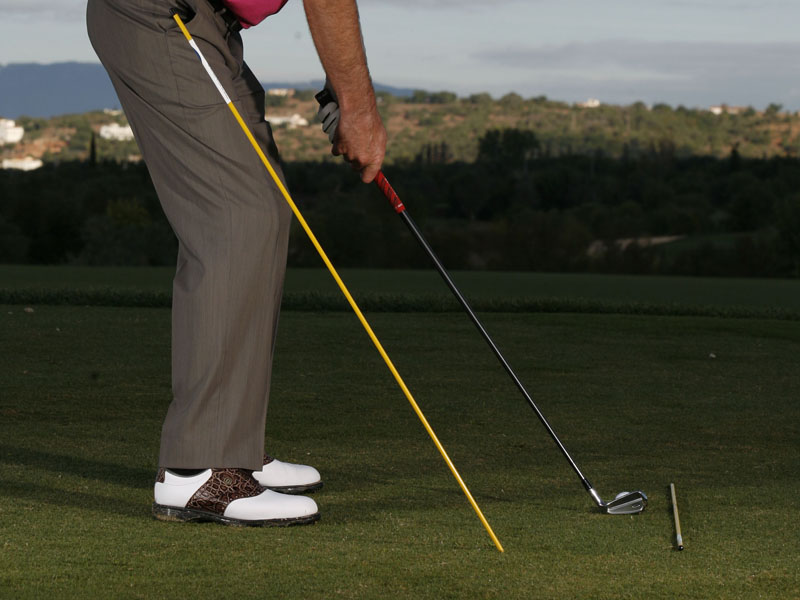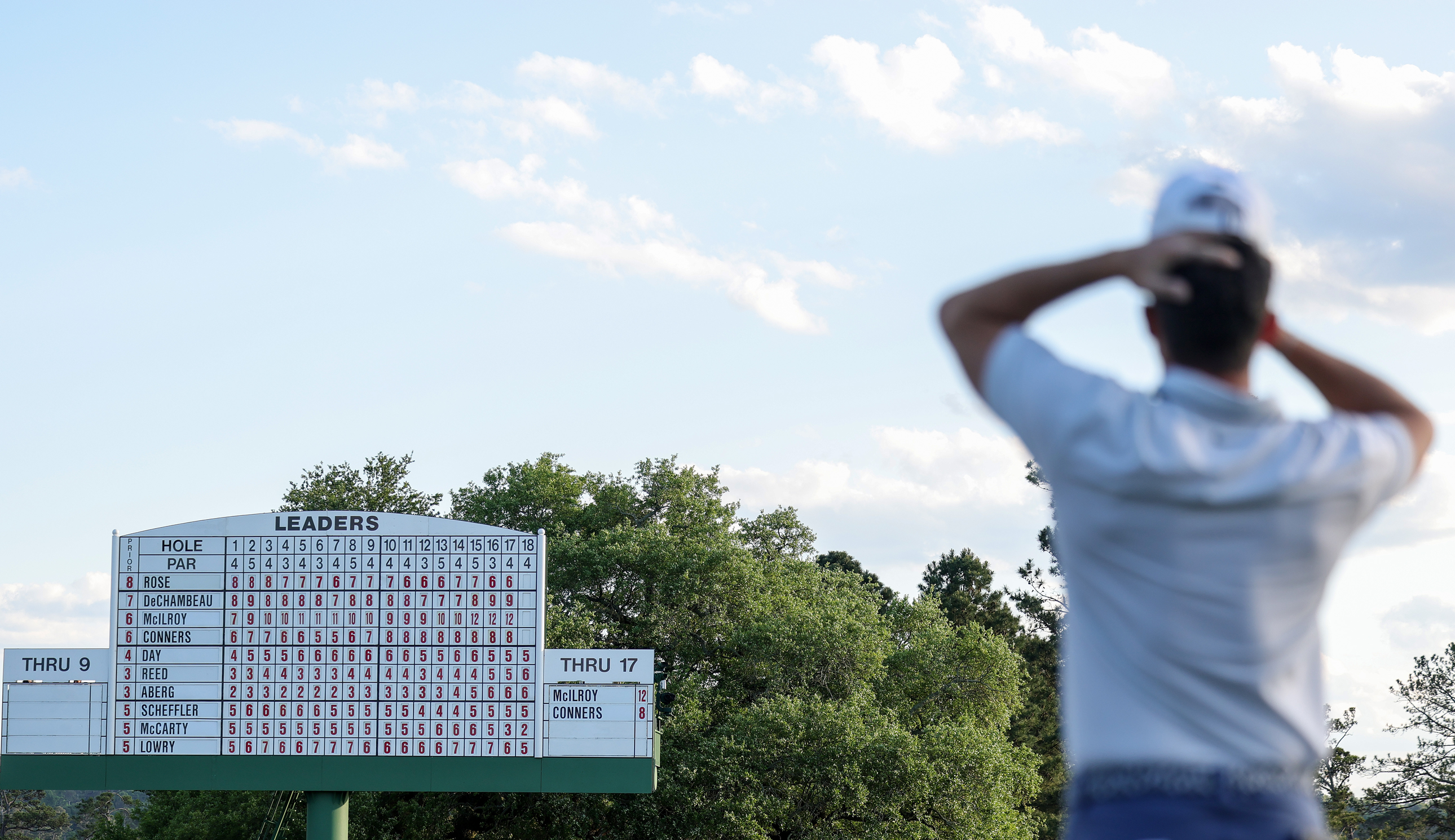Swing plane tips video
Golf Monthly top 25 coach Andrew Reynolds has some swing plane tips for you to help improve your ball striking and hit the ball straighter.


Golf Monthly top 25 coach Andrew Reynolds has some swing plane tips for you to help improve your ball striking and hit the ball straighter.
Swing plane tips video
Your ideal swing plane will depend on your physique. Taller players will naturally have a slightly more upright plane, while shorter people will have a flatter plane – this is normal. That’s why I like the idea of setting up the workstation you can see here.
There are two alignment sticks on the ground, one for body alignment and one for clubface alignment.
The third stick is to help you with your swing plane. Importantly, this should point from the golf ball to your sternum at address.
Your swing plane will also change with the short clubs.
The angle of this stick will be different depending on your physical characteristics and, as I’m about to show, it will really help you understand how the club should work during the swing.
Get the Golf Monthly Newsletter
Subscribe to the Golf Monthly newsletter to stay up to date with all the latest tour news, equipment news, reviews, head-to-heads and buyer’s guides from our team of experienced experts.
Checkpoint one
There are two checkpoints you need to pay attention to. The first is during the takeaway. The top picture below represents a neutral plane and clubface position at the end of the takeaway phase.
It’s amazing how often mistakes happen in the first few feet of the swing, causing a chain reaction of moves that result in poor shots.
The shaft of the club should be perfectly in line with the shaft on the ground, and the clubface should be pointing 90 degrees right.
Make sure that a) the shaft in your hands is not at an angle and b) that your hands are in line with the shaft on the ground. Getting the swing off to a good start is essential, so don’t underestimate the importance of this position.
Checkpoint two
Once you’re happy that you have grooved your takeaway correctly, check your halfway-back position.
Having set your wrists and initiated your shoulder turn, the shaft of your club should be in line with the alignment stick that’s fixed into the ground.
From here, you can just continue your upper body turn until you reach the top of the backswing. Many amateurs will either be above or below the ideal swing plane.
To get back to the ball you’ll either have to come over the top on the way down (hitting slices and pulls) or you’ll attack the ball from too far on the inside (hitting pushes and hooks). Use this check to groove a better position for more consistency.
Bag drill
Of course, if you’re doing most of your winter practice at the driving range, you probably won’t be able to stick an alignment aid in the ground.
If so, use your bag, as I’m doing here. Although this isn’t as precise, it works nicely as a visual aid to help you with your swing plane.
Place your bag in a position where it acts as a handy guide – if your club hits it, then your swing is off plane. This is a great way to hit shots while keeping swing plane at the forefront of your mind.
Posture
Finally, it’s almost impossible to swing the club on the right line if your posture is poor. This is one of those golfing fundamentals that everyone needs to get right.
Make sure that you set a good posture before you begin work on your plane, otherwise your time and effort will be wasted.

Tom Clarke joined Golf Monthly as a sub editor in 2009 being promoted to content editor in 2012 and then senior content editor in 2014, before becoming Sports Digital Editor for the Sport Vertical within Future in 2022. Tom currently looks after all the digital products that Golf Monthly produce including Strategy and Content Planning for the website and social media - Tom also assists the Cycling, Football, Rugby and Marine titles at Future. Tom plays off 16 and lists Augusta National (name drop), Old Head and Le Touessrok as the favourite courses he has played. Tom is an avid viewer of all golf content with a particularly in depth knowledge of the pro tour.
-
 Why The 16th Pin Has Been Moved From Its Traditional Spot For The Masters Final Round
Why The 16th Pin Has Been Moved From Its Traditional Spot For The Masters Final RoundThe 16th pin at Augusta National is in an different position that normal for the final round of The Masters, but why is that?
By Mike Hall Published
-
 Seve Ballesteros And Brooks Koepka Among The Big Names That Rory McIlroy Would Join As A Five-Time Major Winner With A Masters Victory
Seve Ballesteros And Brooks Koepka Among The Big Names That Rory McIlroy Would Join As A Five-Time Major Winner With A Masters VictoryRory McIlroy leads The Masters going in to the final round and, if he were to win, he would join an illustrious list of five-time Major winners
By Matt Cradock Published